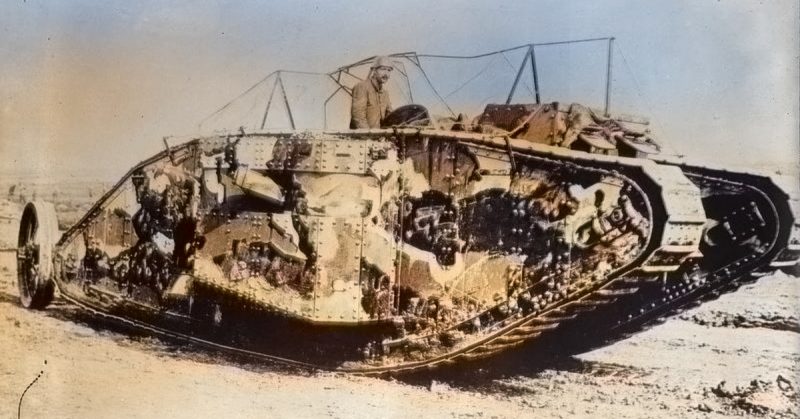As the inventors of the first tanks, the British produced many early influential fighting vehicles.
Little Willie
In 1915, the British government set up the Landships Committee. Its job was to find a bulletproof machine that could cross trenches and barbed wire, with the intention of breaking the stalemate on the Western Front of the First World War.
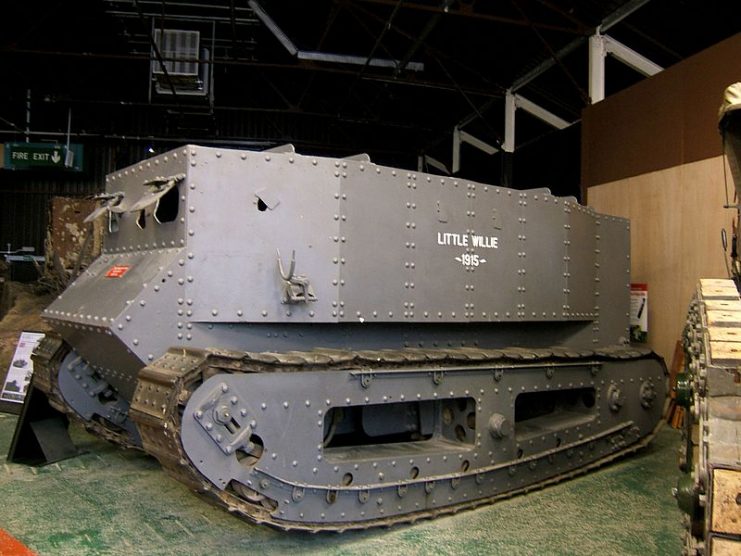
After several unsuccessful attempts, the first proof of concept was created in the form of Little Willie. Created by an industrialist named William Tritton and a Royal Navy armored car commander named Walter Wilson, Little Willie used tractor tracks to cross obstacles and trailed wheels to steer. It didn’t meet the War Ministry’s standards but provided information on track and steering design that allowed the creation of the next prototype.
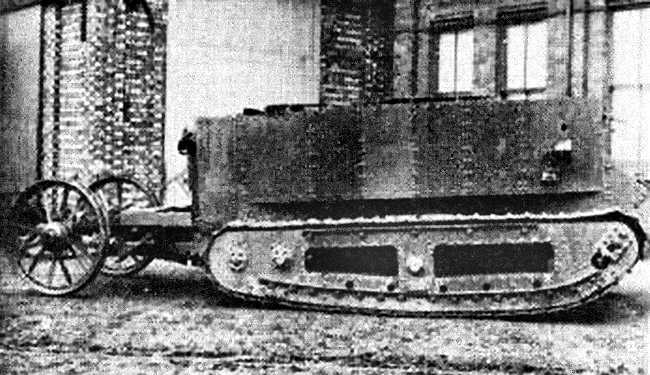
Mother
The first rhomboidal tank, Mother, set the standard for British heavy tank design during the First World War.
Mother was designed to tackle one of the biggest challenges set by the War Office: to create a vehicle that could cross trenches and other obstacles. One suggestion was for a vehicle with wheels 12 meters in diameter, an obviously impractical suggestion. But Lieutenant Wilson realized that similar results could be obtained by creating a rhomboidal hull and running the tracks all the way around it.
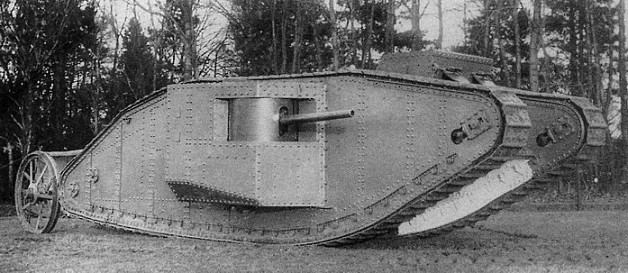
Mother was equipped with these tracks, a trailing wheeled unit for steering, and a pair of naval six-pounder guns. The vehicle first ran successfully in January 1916. The following month, it was demonstrated to the Minister of Munitions and other senior figures. This led to the first order for tanks.
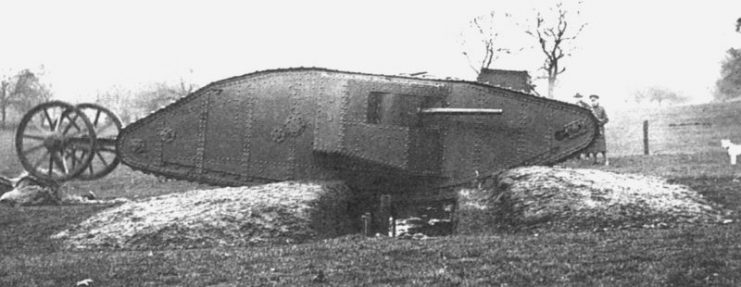
Marks 1-9 Combat Tanks
Following the success of Mother, the British started manufacturing the Mark 1 tank, again designed by Tritton. Based on Mother but replacing boiler plate with armor plate, this became the first in a series of similar designs running through to the Mark 9. They made up the bulk of British tanks during the First World War.
These tanks came in two version – male types carried heavy guns in sponsons; females carried machine guns. The types were meant to work together, with males taking out heavy positions while females dealt with enemy infantry.
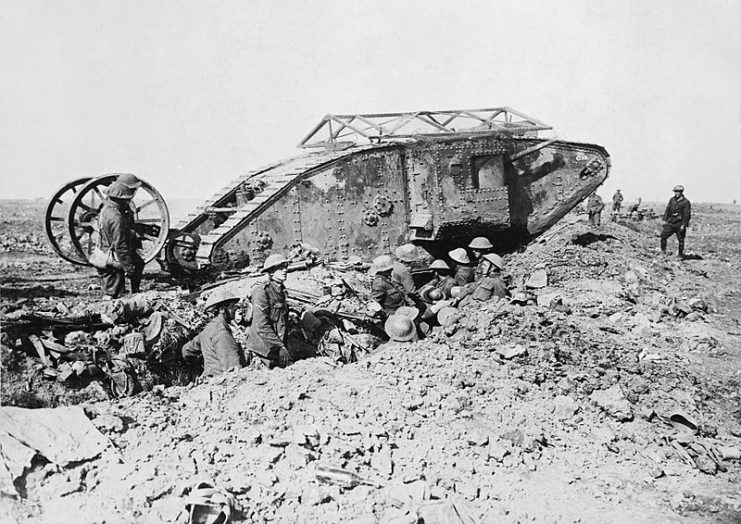
The Mark 1 was the first tank to enter battle, shocking the Germans with its appearance in 1916. It was complicated to drive and somewhat unreliable.
Marks 2 and 3 were soon developed, based on early experience in battle. They improved the tracks, steering, armor, and emergency exits for the crew.
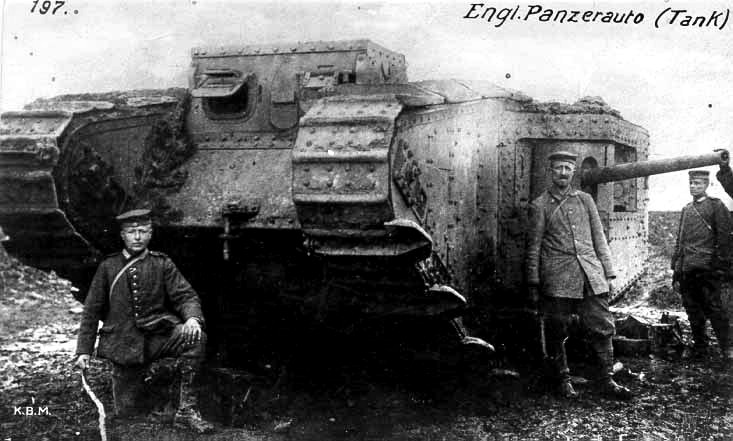
Introduced in March 1917, the Mark 4 had better tracks and sponsons, as well as thicker armor to counter armor-piercing bullets. This was followed in October by the Mark 5, with a rear machine gun, further thickening of the armor, and a more powerful engine specifically designed for tanks. For the first time, one man could control the gears and steer on his own.
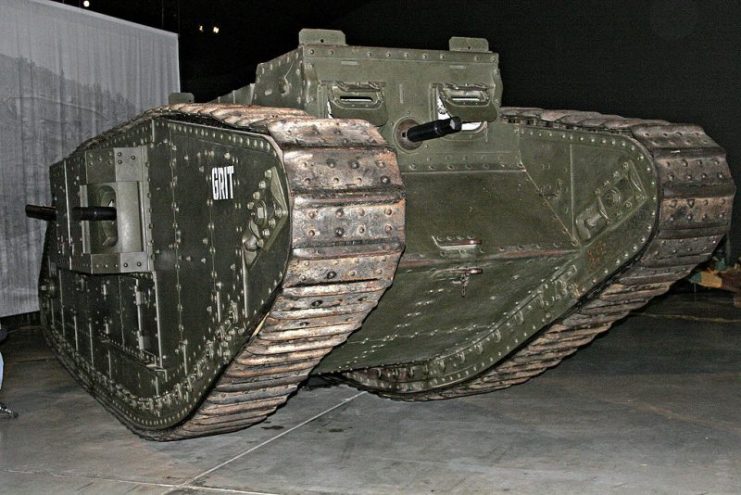
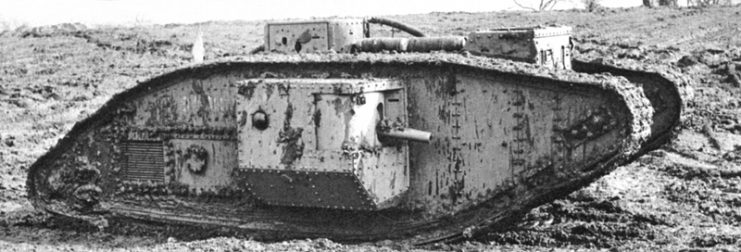
Marks 6 and 7 never got beyond the test stages, as their proposed improvements proved impractical.
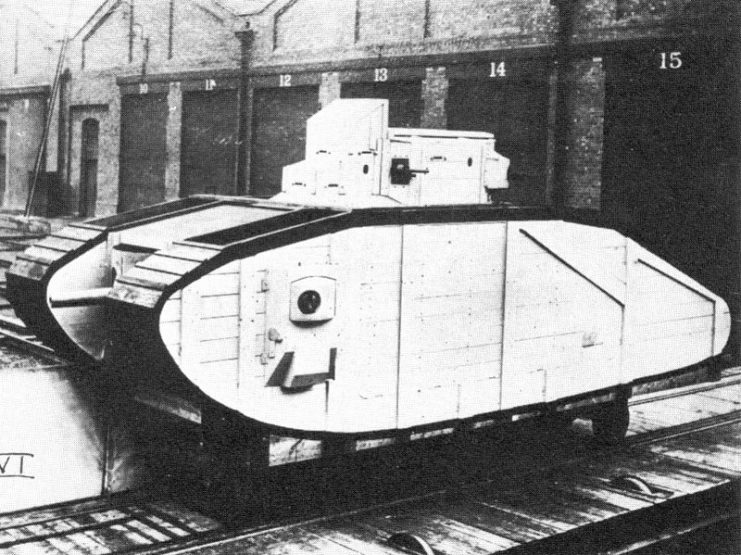
The Mark 8 was a joint Anglo-American production, also known as the Liberty. It incorporated a range of improvements that protected the crew from fumes, gave the commander a better view, and made the tank easier to transport. Plans to build 1,550 for a 1919 offensive were abandoned due to the end of the war. Around a hundred were later assembled from parts that had already been produced.
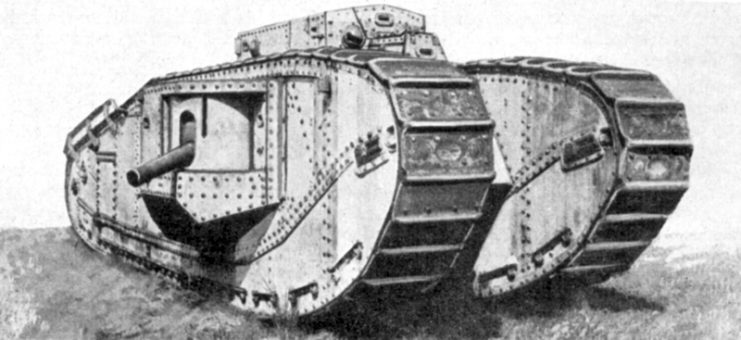
This tank series ended with the Mark 9, a supply tank. Again, production stopped with the armistice, and only 23 were made.
Whippet
The first major deviation from the Mark 1 series was the Medium A Tank, known as the Whippet. Again, this was designed by Tritton.
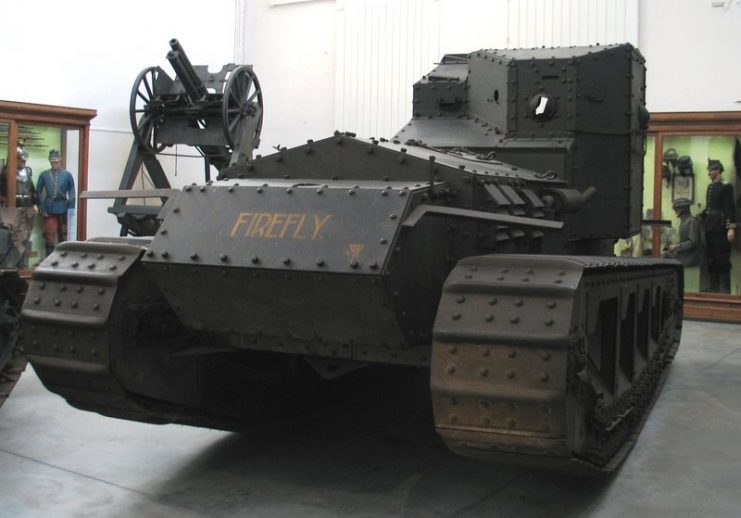
The Whippet was designed to meet a request from the Army for a lighter, faster tank. In the minds of army commanders, the war would be won by a breakthrough in the lines which could be exploited by fast-moving troops. A fast, light tank could carry out this exploitation work, as cavalry had traditionally done.
The Whippet’s weaponry consisted of machine guns fired through ports in a raised firing compartment. It was powered by two engines and steered by slowing down one while speeding up the other. This created an efficient vehicle that needed a skilled driver.
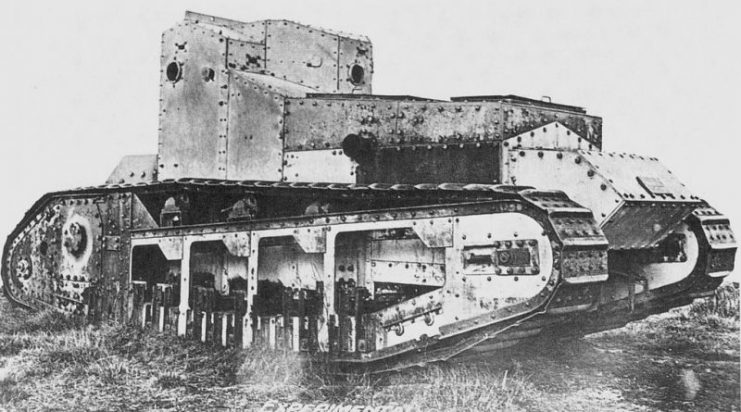
Around 200 Whippets were made in 1917-18. They saw their first use in March 1918, helping to prevent a German breakthrough near Serre.
Hornet
After talking with the men who had crewed tanks in action, Tritton gained a greater understanding of the problems with tanks and how to solve them. The result was the Hornet medium tank.
Better ventilation and isolating the engine helped protect the crew from fumes. Steering could be done by a single man using a Wilson gearbox and transmission. A cupola gave the commander better oversight of his crew. Breaking from established design practices, the tracks were lowered while the superstructure was raised and improved.
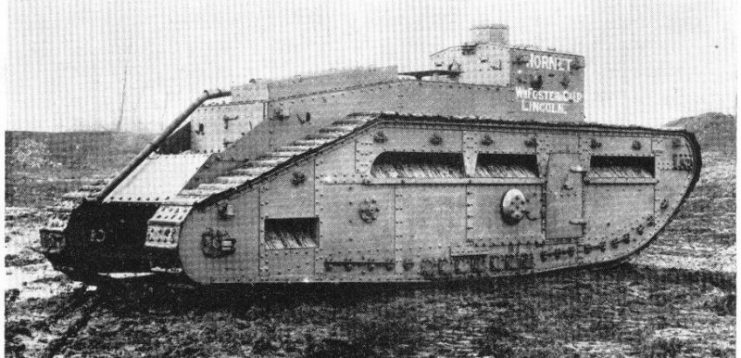
Thousands of hornets were ordered in 1918, then canceled when the war ended. Only 36 were completed, but the changes in their design shaped future tanks.
Independent
Produced by Vickers-Armstrong Ltd. in 1925, the Independent never got past the pilot stage but was still hugely influential. Aspects of its design were copied by the Russians and Germans.
The Independent was designed to fulfill a specification from the General Staff. They wanted a heavy tank that combined speed with multiple weapons, one that could fight independently rather than having to stick with the infantry.
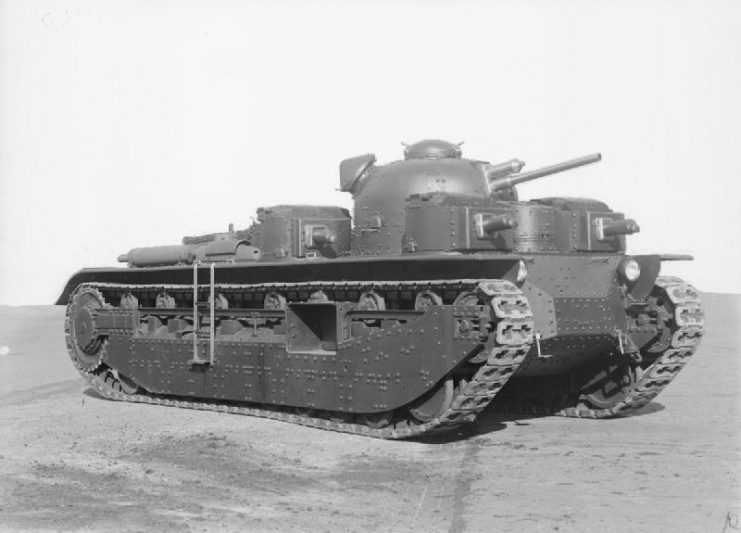
The hull was set between the tracks and their suspension, instead of having the tracks run around the hull. There were five separate turrets, the main one carrying a 47mm gun, the others bearing machine guns. The commander had his own cupola as well as telegraph and telephone systems to communicate with the other turrets.
Read another story from us: Paving the Way for Tank Development – Renault FT 17
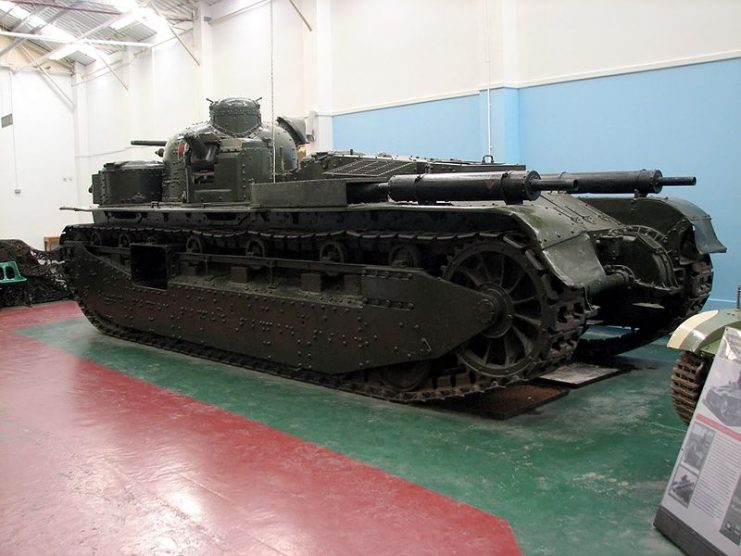
The Independent was a sound design, its production only curtailed by lack of funds. It showed how far tanks had come in just ten years and foreshadowed the design changes that would shape the tanks of the Second World War.
